E-Archive
Articles
in Vol. 14 - September Issue - Year 2013
Microfluid Finishing Technology
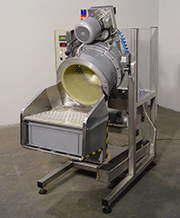
Picture 1: Example of a small disc- finishing unit of 50 liters, including microfluid dosing station and final separating sieve, with automatic reloading of the finishing media
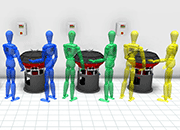
Picture 2: Example of the four steps, involving four vibratory finishing units and eight times the operator
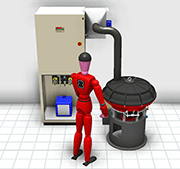
Picture 3: Example of the four-step process automatically made with the new microfluid technology (Patent pending
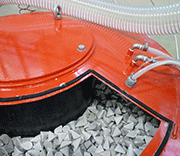
Picture 4: Top view of the processing tank of a vibratory finishing unit of 330 lt. capacity, with QF media inside and the relative feeding piping for the automatic dosage of "microfluid" gel compounds

Picture 5: One video page of the PLC during a "microfluid" finishing process; many variables can be pre-set
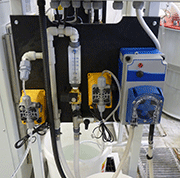
Picture 6: An example of automatic dosing station for a machine designed for the innovative "microfluid" finishing process
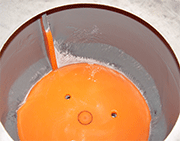
Picture 7: The suspended solids retained into the basket of a common centrifugal filter for muds
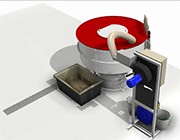
Picture 8: The suspended solids retained into the filter-bag, then released to the factory drainage
Since year 2010 a new technology, named "Microfluid" (patent pending – I), is available for surface finishing of several kind of parts, in different materials like metals, ceramics, polymers, and many others. Between the several potential applications, there are all those ones that need multiple finishing steps, from rough deburring, to fine finishing, polishing and final drying. To better understand the advantages of this innovative technology let’s do a practical example, as follows:
Example of classic surface finishing, in centrifugal disc finishers
Small components, like titan implants, are made with a first process in three centrifugal disc finishing units, where in the first one they are loaded into a first ceramic media batch, in combination with a liquid compound to activate a cleaning action – during this first phase the surface is rough and the action of this media is to make an abrasive action of high level; then the parts are unloaded from this first unit, separated, and loaded into the second unit, where there is a plastic media of medium/fine cut, specifically formulated for titan alloys; then the parts are unloaded from this second unit, separated, and loaded into the third unit, where the surface is reduced in its roughness to a medium/fine level, the surface coming out is clear and soft; this third process takes care of the final polishing and, in the relative unit the media is a fine porcelain of small size, combined with a liquid detergent. At the end of this final polishing process, the parts are unloaded for the third time, separated, and loaded into a special basket made of fine net in stainless steel, that is used to steep the parts into the following washing process with ultrasonic generators.
To recap, the above process, independently from the duration of each single process, requires the intervention of the operator to unload and separate the locking plates from the finishing media three times. This intervention, moreover, must be done as much as possible, in the same moment that each process ends, to allow the processing tank to be available for the next process and to maintain an efficient role in the work flow.
Example of microfluid surface finishing, in centrifugal disc finishers
Unlike the above-described classic process, the machine employed for the microfluid finishing is only one. One processing tank, that’s it. In fact, to complete the three phases of finishing on the same small components, like titan implants, the microfluid machine operates the equivalent action of phase one (medium high cut deburring), of phase two (medium/fine smoothing) and phase three (polishing), always using the same "media".
This kind of "media", named QF (Patent pending – I) is the modern substitute of several classic media (like a combination of plastic and ceramic chips). How is this possible? It is possible thanks to the so-called "vectorial" technology of this peculiar kind of media. In other words, the QF media does not have (in this kind of application) any abrasive action at all on the surface to be finished. Why? Because in this way, it is possible to act as a "vector" for a special kind of finishing compound, typical of the "microfluid" process technology, made of GEL. This innovative gel can be combined with very aggressive abrasives, as well as very fine and micro-crystalline abrasives, in order to stick to the surface of the "vectorial" media and transfer its abrasive action and/or finishing action all over the surface of the part to be processed.
It is important to say that, because of its peculiar manufacturing method and its composition, the QF media are lasting, on average, about 10 to 20 times longer than a common plastic or ceramic media, allowing new scenarios in the cost and pollution reduction.
The peculiarity of the "microfluid" finishing compounds is to be bonded by a gel; this gives long-term humidity to the finishing process, thus avoiding the need for water to be added to the working cycle from an external source. Thanks to this idea, the "microfluid" finishing process saves a huge volume of water, involving, only in the very long-lasting cycles, an eventual dropping-in of water, limited to assure the right level of humidity.
The comparison between a classic cycle and the "microfluid" finishing process gives differences in the order of at least 10 times reduction, or higher.
A further step forward in automation of the process has been made from the "microfluid" technology; because the gel compounds are extremely easy to be automatically pumped inside the processing tank, it does not matter if the finishing unit is a disc finisher, a vibratory finishing unit, or a drag finisher. Therefore, during the "microfluid" finishing process, the PLC of the mainboard is giving the right input to pump 1 for the first very abrasive gel-compound, which simulates the "ceramic" media action in combination with the QF media, then to pump 2 for the medium/fine gel-compound, which simulates the action of the plastic media and finally, to the polishing gel-compound, which simulates the action of the porcelain media.
To recap, the above process, independently from the duration of each single phase, does not require the intervention of the operator to unload and separate the locking plates from the finishing media three times, but only the start load and the final unload and separation. This process, moreover, assures improved standards of water reduction and costs reduction.
Last, but not least, the QF media assures an average lifetime about 10 times longer than a classic plastic or ceramic media, with consequent containment of muds, waste and consumption in general.
Example of classic surface finishing, in vibratory finishing machines
In this example, the parts to be processed are in brass, very delicate and with a belt grinding preparation. These kinds of parts have to be unloaded, picking them up by hand to avoid shocks, then they are fixed over frames in order to proceed towards the next electroplating process (chromium plating).
The process is similar to the one described above for the titan implants, but it foresees a further step into the vibrator, which is to rinse the parts before unloading them. Of course, to do this, the four rinse cycles required for the vibratory finishing machines are, respectively:
Unit 1 for fast deburring with ceramic media;
Unit 2 for fine smoothing with plastic media;
Unit 3 for polishing with porcelain media;
Unit 4 for drying with ground corn-cob granulates;
Example of microfluid surface finishing, in a single vibratory finishing machine
The microfluid vibratory finishing machine required to do all the above four steps in only one unit, with automatic sequences, needs only to be loaded, then its top cover closed and the "START" button pressed.
Then, the machine can proceed to automatically process the four steps, assuring an excellent final dropping out and drying operation.
The operator that will do the manual pick-up of the brass parts will feel the media and the parts still warm and dry.
Of course, the same technology is applied on the vibratory finishing machines with automatic separation.
Example of classic water treatment, with a common system
In this example, consider the previous case with three vibratory finishing units working with a wet process, then a final dryer. To simplify all the three processes, the supplier adopted the strategy to offer a finishing compound common to all the three phases. The choice is for a universal liquid compound having extremely good detergent capacity, and a good finishing level combined with porcelain media so that the last phase is advantaged, not forgetting that the same detergent capacity helps the two previous phases, keeping active the finishing media and deterging the surface of the parts to be carefully finished.
Following this principle, for all the three machines, although with different flows, it is possible to use the same finishing solution based on tap water and only one common liquid compound.
Accordingly, the water treatment can be made towards a centrifugal filter that is partially recycling the filtered water and, by overflow, a certain percentage of effluents are continuously evacuated by the system to allow a continuous regeneration.
Analysing what is done by this system:
Unit 1 for fast deburring with ceramic media – finishing time 4 hours – water/compound fed at flow of 60 l/h – effluent volume needed 4x60=240 l;
Unit 2 for fine smoothing with plastic media – finishing time 3 hours – water/compound fed at flow of 60 l/h – effluent volume needed 3x60=180 l;
Unit 3 for polishing with porcelain media – finishing time 2 hours – water/compound fed at flow of 60 l/h – effluent volume needed 2x40=80 l (this is fresh water and fresh compound to regenerate the volume in recirculation on one hand, and on the other hand, to avoid micro residuals contained in the recycled water to affect the final polishing phase);
Finishing solution (water/compound) needed from the finishing system every cycle: 500 l
Effluent released from the centrifugal filter every cycle: only 80 l (16%)
This effluent contains metal particles, pollutants in solution, and BOD and COD parameters are normally out of the limits; therefore there is still a chemical physical treatment required before eventual discharge into the industrial drainage system. Alternatively, this quantity has to be disposed of by a company specializing in waste.
Suspended Solids, the major part (nearly the total), are filtered by the centrifugal basket of the filtering unit and released as humid-mud waste to be disposed of by a company specializing in waste.
Example of simplified water treatment, after a microfluid process
In this example, consider the previous case with one single vibratory finishing unit working with the new microfluid process. The situation, in this case, is completely different because the main principle of use of the microfluid process is, as the word says, to use "micro" quantity of "fluid".
Following this principle, for this single machine, it is not required a centrifugal filter to retain the suspended solids.
Moreover, the overall quantity of fluids employed in the full process, is lower or equal to the overflow quantity of the "classic" centrifugal filter above mentioned.
Accordingly, the water treatment is extremely simplified, by using a simple filter bag with a suitable reception tank positioned under the discharge outlet of the vibratory finishing machine.
The advantages are no investment required (very small), high energy saving (no electrical motors), and extreme simplicity.
Analysing what is done by this system:
Phase A for fast deburring with QF media + High Cut Gel – finishing time 4 hours – water fed at flow of 2,5 l/h + 850 gr. of ABRAGEL + 10 lt. final rinsing – effluent volume needed 4x2,5=10 l + 10=20 l;
Phase B for fine smoothing with QF media + Medium/Fine Cut Gel – finishing time 3 hours – water fed at flow of 2,5 l/h – no additional rinsing foreseen – effluent volume needed 3x2,5=7,5 l;
Phase C for polishing with QF media + polishing liquid compound – finishing time 2 hours – water/compound fed at flow of 25 l/h – effluent volume needed 2x25=50 l;
Finishing solution (water/compound) needed from the finishing system every cycle: 77,5 l
Effluent released from the filter bag every cycle: about 76 – 76,5 l (small % is remaining with the humid mud) – this effluent contains metal particles, pollutants in solution, and BOD and COD parameters are normally out of the limits, therefore there is still a chemical physical treatment required before eventual discharge into the industrial drainage system. Alternatively, this quantity has to be disposed of by a company specializing in waste.
Suspended Solids, the major part (nearly the total), are filtered by the filter bag and released as humid-mud waste (after storage in a warm area to partially de-hydrate per natural drying at the air) to be disposed of by a company specializing in waste.
In conclusion, the microfluid technology (patent pending – I), combined with the innovative QF media of very long-lasting life (Patent pending – I), is offering a completely new scenario of use in the modern industry, of vibratory finishing or disc-finishing equipment.
For Information:
Rollwasch® Italiana S.p.a.
Via San Carlo, 21
20847 Albiate (MB), Italy
Tel. +39.0362.930334
Fax +39.0362.931440
E-mail: info@rollwasch.it
www.rollwasch.it



























